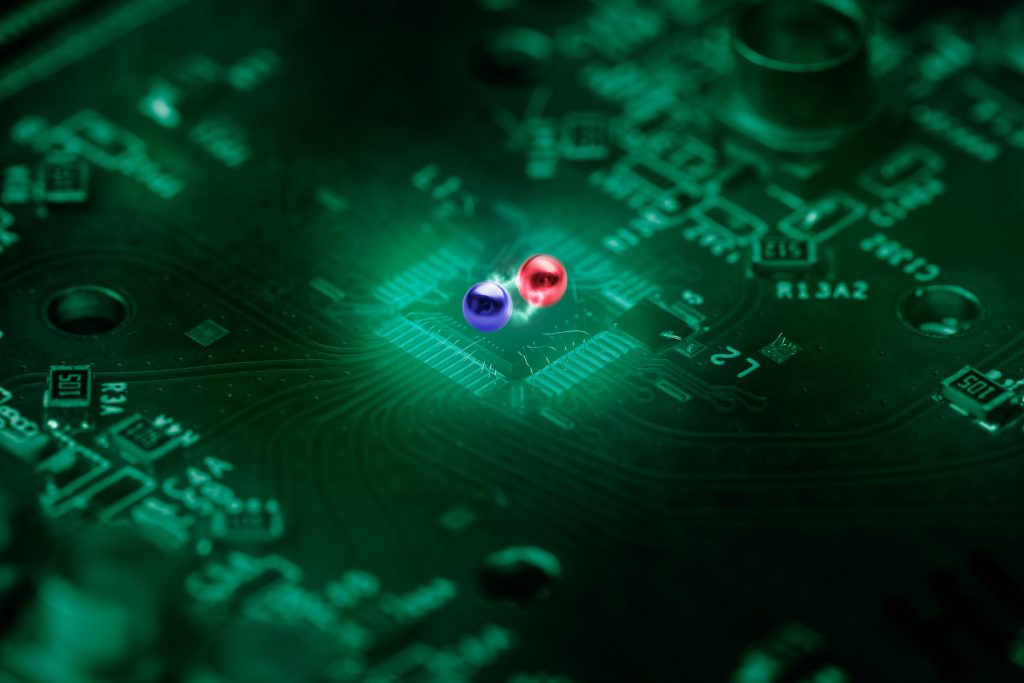Researchers in Australia have demonstrated that near-error-free quantum computing is attainable, clearing the path for developing silicon-based quantum devices that are compatible with existing semiconductor manufacturing technologies.
“Today’s publication in Nature shows our operations were 99 per cent error-free,” says Professor Andrea Morello of UNSW, who led the work.
“When the errors are so rare, it becomes possible to detect them and correct them when they occur. This shows that it is possible to build quantum computers that have enough scale, and enough power, to handle meaningful computation.”
Morello’s work is one of three in the journal Nature that independently confirmed that quantum computing in silicon is real. With a three-qubit system consisting of one electron and two phosphorus atoms implanted in silicon through ion implantation, he obtained 1-qubit operating fidelity of up to 99.95% and 2-qubit fidelity of 99.37%.
A Delft team led by Lieven Vandersypen in the Netherlands achieved 99.87% 1-qubit and 99.65% 2-qubit fidelities utilizing electron spins in quantum dots produced in a stack of silicon and silicon-germanium alloy (Si/SiGe).
In a two-electron system utilizing Si/SiGe quantum dots, a RIKEN team led by Seigo Tarucha achieved 99.84 percent 1-qubit and 99.51 percent 2-qubit fidelities.
The UNSW and Delft teams validated the performance of their quantum processors using gate set tomography; an approach developed at Sandia National Laboratories in the United States.
Morello had previously proved that he could store quantum information in silicon for 35 seconds due to nuclear spins’ isolation from their surroundings.
“In the quantum world, 35 seconds is an eternity,” says Prof. Morello. “To give a comparison, in the famous Google and IBM superconducting quantum computers, the lifetime is about a hundred microseconds — nearly a million times shorter.”
However, separating the qubits made it appear impossible for them to engage with each other, which is required to execute actual calculations. The study reveals how his team overcomes this challenge by encircling two nuclei of phosphorus atoms with an electron.
“If you have two nuclei that are connected to the same electron, you can make them do a quantum operation,” says Dr. Mateusz, one of the lead authors.
“While you don’t operate the electron, those nuclei safely store their quantum information. But now you have the option of making them talk to each other via the electron, to realize universal quantum operations that can be adapted to any computational problem.”
“This really is an unlocking technology,” says Dr. Serwan Asaad, co-author. “The nuclear spins are the core quantum processor. If you entangle them with the electron, then the electron can then be moved to another place and entangled with other qubit nuclei further afield, opening the way to making large arrays of qubits capable of robust and useful computations.”
“The phosphorus atoms were introduced in the silicon chip using ion implantation, the same method used in all existing silicon computer chips. This ensures that our quantum breakthrough is compatible with the broader semiconductor industry,” according to David Jamieson, project head at the University of Melbourne,
All modern computers include error correction and data redundancy, but quantum physics imposes substantial limits on how these functions are implemented in quantum computers.
“You typically need error rates below 1 percent to apply quantum error correction protocols. Having now achieved this goal, we can start designing silicon quantum processors that scale up and operate reliably for useful calculations,” Prof. Morello added.

